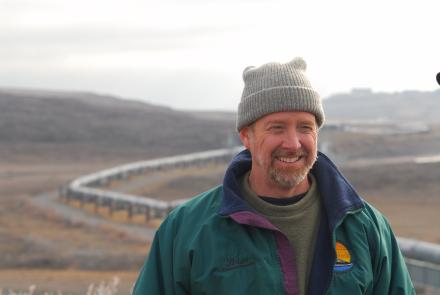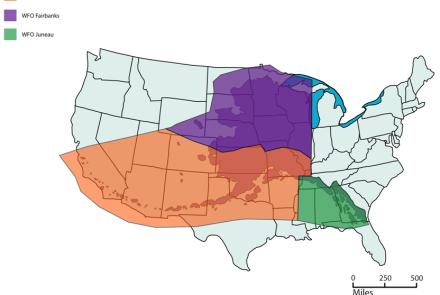
Don't Build On A Glacier's Right-Of-Way
The spectacle of a glacier bulldozing its way through an Alpine village or a freeway may be great stuff for a TV melodrama, but how plausible is such a scenario in reality? Perhaps surprisingly, the answer is that it has happened quite a few times in recorded history.
Most documented cases involve medieval villages that had first been settled before the "Little Ice Age" of the 17th century. Although the glacial hazards of the Little Ice Age originated with the beginnings of climatic deterioration in the 13th and 14th centuries, it was not until around 1600 that advancing ice started to damage and destroy buildings in the French and Swiss Alps.
When colonization of the Alps began, the decision to settle and farm seemed reasonable because the glaciers at the time were small and far away. But between 1600 and 1650, at least half a dozen villages in the Chamonix valley of France were overrun. Many others suffered damage due to glacial flooding and avalanches, and some were simply abandoned out of despair.
Somewhat later, during the first part of the 18th century, the cycle of glacial advance arrived in Norway and Iceland. Here, as in the Alps, homes and buildings were abandoned as the ice approached. One tragic incident involved the occupants of a farming community that was threatened by Norway's Abrekkebreen glacier in 1728. The entire group moved to a location that the people thought was safer, only to have their new homes wiped out by an avalanche. There were only two survivors.
The record in Alaska in incomplete, but there are at least two documented cases where glacial advance has uprooted settlements. One of these occurred some time before 1794, when Captain Vancouver mapped a deserted Indian village near the terminus of Brady glacier in the Lituya Bay area. During the next 100 years, the glacier advanced 6 miles and buried the village site under 1000 feet of ice. The other Alaskan example is drawn from Indian folklore which tells of a people who had once lived on the shores of Icy Bay, green at the time but now covered with Guyot glacier.
In more recent Alaska history, the most worrisome threat posed by glaciers was probably that faced by the Copper River and Northwestern Railway during the early part of the century. This railroad, which connected Cordova with the Kennicott Copper Mines in the Wrangell Mountains, followed the Copper River valley on which Miles and Childs glaciers were encroaching in a pincers movement from the east and west. Geological evidence showed that the glaciers had coalesced on the right-of-way at least once during the past several centuries. As recently as 1885, the nose of Miles glacier had stood only about 120 yards from the site of the "Million Dollar Bridge" across the Copper River. (The bridge was so named because of the extreme difficulty with which it was built during the period from 1906 to 1910 -- actually, it cost more.)
Between 1885 and 1908, both glaciers had receded to provide a gap of over three miles, but rapid advances during construction of the bridge narrowed this to about two, and Childs glacier surged to within less than 500 yards in June of 1911. If the larger Miles glacier had advanced at the same rate, the ice front would easily have engulfed the bridge.
Yet it was not glacial ice that eventually proved the undoing of the Million Dollar Bridge. What Mother Nature failed to do with glaciers, she accomplished with the 1964 Alaska earthquake, which dropped the northern span of the bridge into the Copper River.





